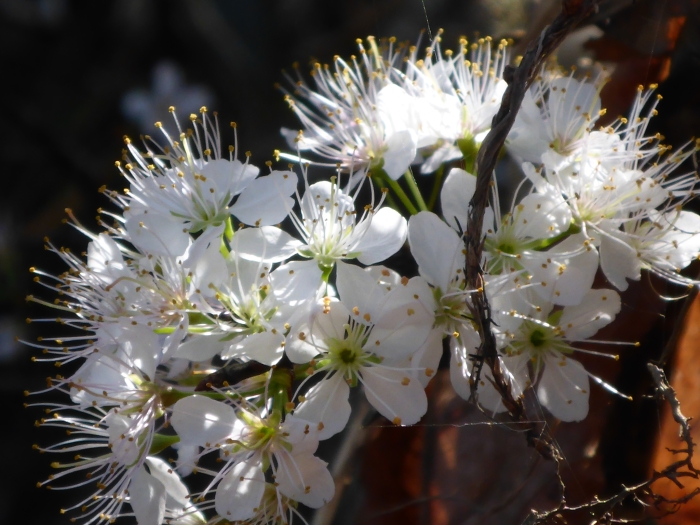Flatwoods Plum
(Prunus umbellata)
Flatwoods Plum (Prunus umbellata)
/
/

mfeaver
CC BY 4.0
Image By:
mfeaver
Recorded By:
Copyright:
CC BY 4.0
Copyright Notice:
Photo by: mfeaver | License Type: CC BY 4.0 | License URL: http://creativecommons.org/licenses/by/4.0/ | Rights Holder: mfeaver | Publisher: iNaturalist | Date Created: 2017-02-14T13:15:09-08:00 |






























Estimated Native Range
Summary
Prunus umbellata, commonly known as Flatwoods Plum, Hog Plum, or Sloe Plum, is a deciduous small tree or large shrub native to the Southeastern United States, particularly found in pine flatwoods, open woodlands, and along stream banks. It typically grows to a height of 20 feet (6.1 meters) with a spread of 15 feet (4.6 meters) and can live up to 40 years. The plant has alternate, serrate green leaves that turn yellow in autumn, adding seasonal interest to the landscape. The white to creamy flowers, sometimes with a grayish tinge, bloom in early spring and are moderately showy, attracting pollinators. Following the flowers, round, purple fruits, 1.3–2.5 centimeters in diameter, mature from August to October. The fruits are edible and are often used to make jellies and jams, providing a culinary use for the plant.
Flatwoods Plum is valued for its wildlife benefits, as the fruits serve as a food source for birds and other wildlife. It is also appreciated for its ornamental qualities, such as its attractive bark and spring flowers. This species is used in naturalistic plantings, as a specimen in residential gardens, and for restoration projects. It is drought-tolerant once established and prefers full sun but can tolerate partial shade. It thrives in acidic, well-drained soils and is relatively low-maintenance. However, it may have issues with plum curculio and other insect pests, and fruit production can be biennial, with large crops appearing only every 3–4 years.CC BY-SA 4.0
Flatwoods Plum is valued for its wildlife benefits, as the fruits serve as a food source for birds and other wildlife. It is also appreciated for its ornamental qualities, such as its attractive bark and spring flowers. This species is used in naturalistic plantings, as a specimen in residential gardens, and for restoration projects. It is drought-tolerant once established and prefers full sun but can tolerate partial shade. It thrives in acidic, well-drained soils and is relatively low-maintenance. However, it may have issues with plum curculio and other insect pests, and fruit production can be biennial, with large crops appearing only every 3–4 years.CC BY-SA 4.0
Plant Description
- Plant Type: Shrub, Tree
- Height: 15-20 feet
- Width: 8-10 feet
- Growth Rate: Moderate
- Flower Color: Cream, White
- Flowering Season: Spring
- Leaf Retention: Deciduous
Growth Requirements
- Sun: Full Sun
- Water: Medium, High
- Drainage: Fast, Medium
Common Uses
Bee Garden, Bird Garden, Butterfly Garden, Drought Tolerant, Edible*Disclaimer: Easyscape's listed plant edibility is for informational use. Always verify the safety and proper identification of any plant before consumption., Low Maintenance, Rabbit Resistant, Showy Flowers
Natural Habitat
Native to pine flatwoods, open woodlands, and stream banks in the Southeastern United States
Other Names
Common Names: Sloe Plum , Flatwood Plum , Flatwoods Plum
Scientific Names: Prunus umbellata , Prunus umbellata var. umbellata , Prunus tarda , Prunus mitis , Prunus umbellata var. tarda , Cerasus umbellata
GBIF Accepted Name: Prunus umbellata Elliott